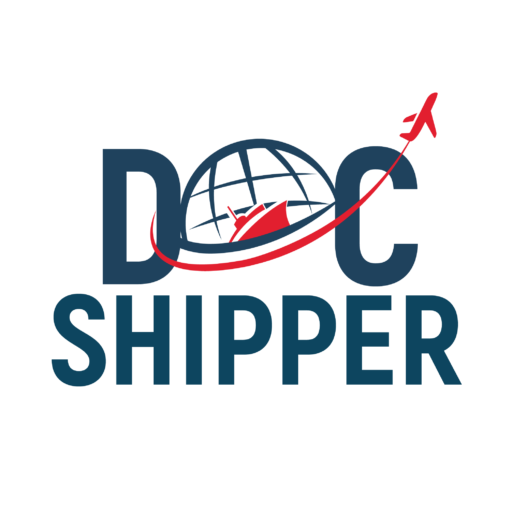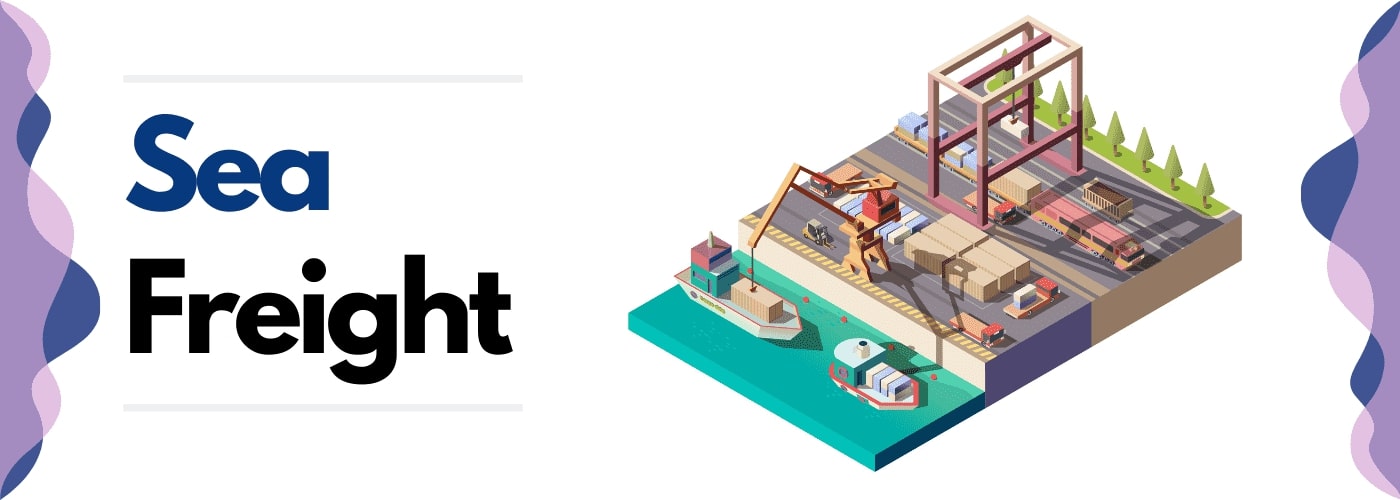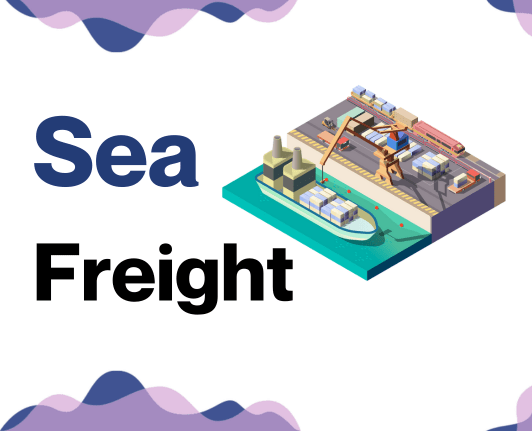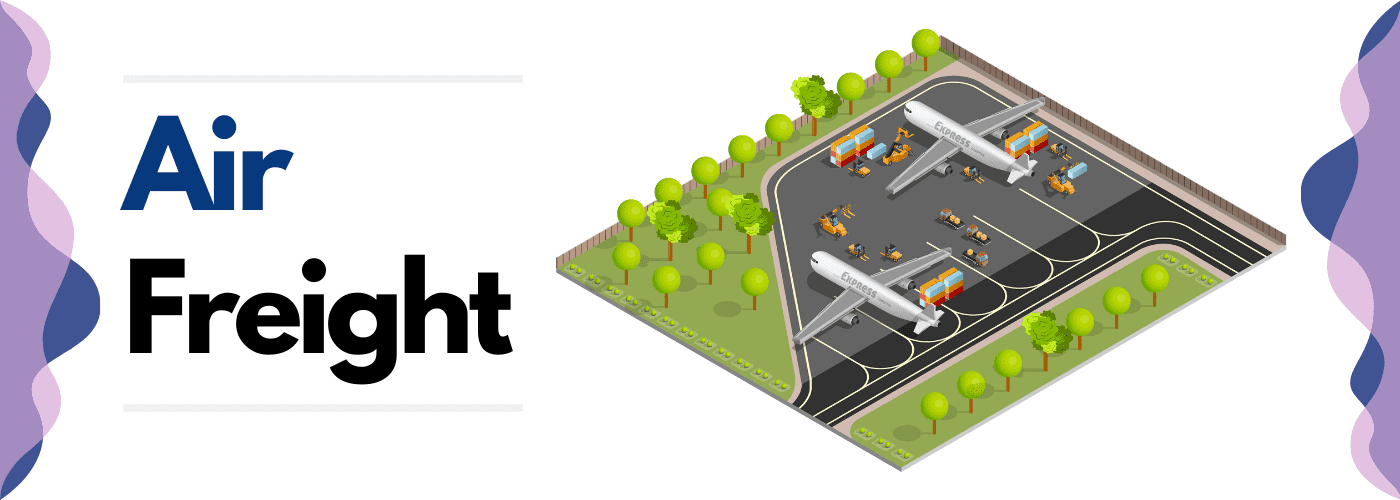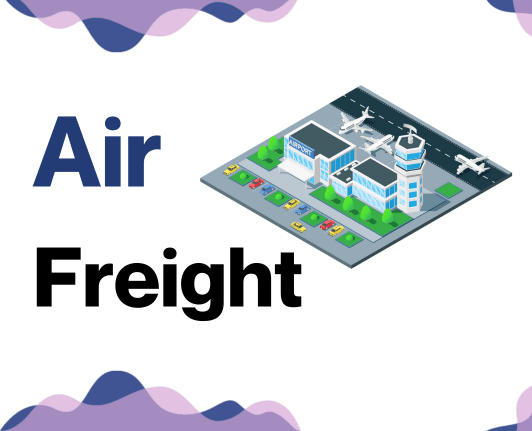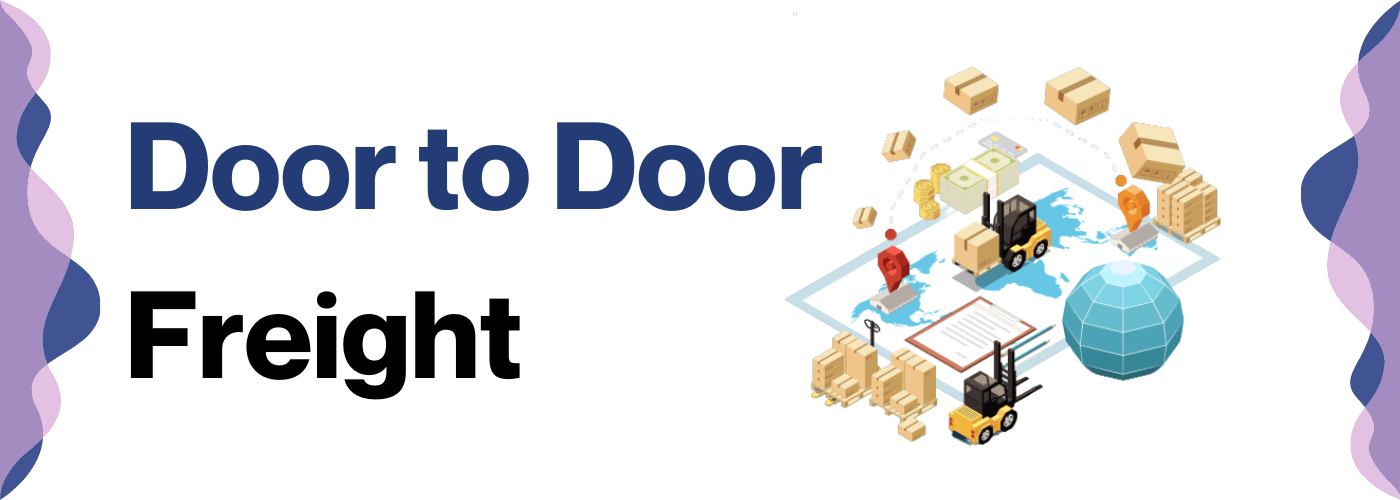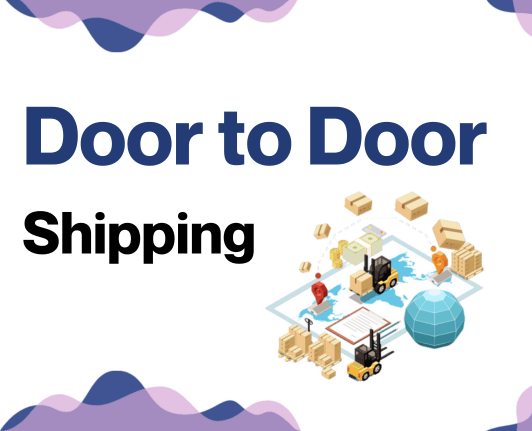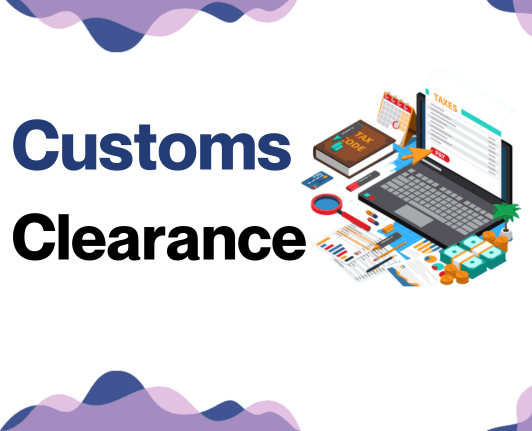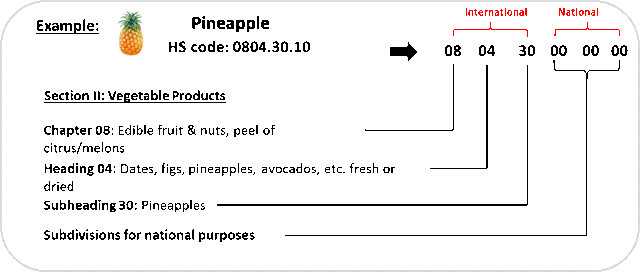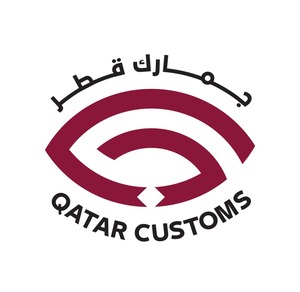Did you hear the one about the shipment that went from Qatar to Austria, and took a 'detour' to Australia? Well, no detours here; we're all about getting you from point 'Q' to point 'A' seamlessly! On this journey, deciphering transit times, grappling with rates or tackling gnarly customs regulations can feel like a daunting maze.
This guide aims to be your compass, leading the way through an array of freight options, intricate customs clearance procedures, and duties & taxes nitty-gritty. The objective is simple - to offer you tailored advice that demystifies cross-border commerce between these two dynamic nations. If the process still feels overwhelming, let DocShipper handle it for you! As your dedicated freight forwarder, we turn potential shipping challenges into triumphs for your business operations. Let’s set sail!
Table of Contents
Which are the different modes of transportation between Qatar and Austria?
Choosing the ideal transport method between Qatar and Austria can seem like solving a puzzle. But picture it this way: Imagine Qatar as a desert island and Austria as a castle surrounded by many gates. With sea routes inaccessible due to Qatar's single coastline and the land-locked nature of Austria, air freight emerges as a shiny knight on a horse, offering a swift and reliable solution. Hard-to-reach doesn't mean impossible-to-reach, but it does emphasize the significance of aligning your transport with the geographical realities of your shipping journey.
How can DocShipper help?
Let DocShipper take the wheel for your Qatar-Austria shipping needs. We'll handle the customs, transport, and paperwork - nothing gets lost in translation. We use air, sea, road, and rail, offering a tailored fit for your business. Got a query? Reach out to our consultants. Ready to launch? Secure a free estimate from us in under 24 hours.
DocShipper Tip: Sea freight might be the best solution for you if:
- You're dealing with hefty quantities or large-scale goods. Sea freight is your go-to for maximizing space without stretching your budget.
- Your cargo doesn't have an urgent deadline, as sea freight typically has longer transit times compared to air or rail.
- Your shipping routes are between major ports, allowing you to leverage the extensive global network of sea shipping lanes.
Sea freight between Qatar and Austria
The strategic dance of sea freight between Qatar and Austria pivots mainly on high-volume goods. It's like a carefully packed game of Tetris, fitting everything into the massive vessels that sail between the bustling ports of Ras Laffan and Antwerp. This route, though slower, is a savvy choice for companies looking to maximize cost-effectiveness.
Often though, businesses hit choppy waters. Without the right compass, it can seem like you're trying to decode an ancient map. Understanding tariff codes or maneuvering through customs can make even a seasoned player feel like this is their first rodeo. But fear not. This guide serves as your lighthouse in the storm. It's packed with best practices to make your transcontinental trek smoother, to help you avoid common pitfalls, and keep your cargo sailing smoothly from Doha to Vienna. Stick around—it's going to be plain, practical sailing from here!
Main shipping ports in Qatar
Hamad Port
Location and Volume: Located on the southeastern coast of Qatar, Hamad Port plays an instrumental role in the country's global trade, exhibiting a shipping volume of around 2 million TEUs.
Key Trading Partners and Strategic Importance: Serving as the gateway for trade with countries in the Middle East, Europe, America, and Asia, Hamad Port is Qatar's lifeline for import and export activities. Due to its state-of-the-art facilities, it has significantly bolstered Qatar's strategic importance in the world market.
Context for Businesses: If you're aiming to expand your operations into the Middle East and Eurasia, Hamad Port serves as a promising gateway. Its sophisticated facilities, including a container terminal and dedicated lanes for imports and exports, can significantly streamline your supply chain.
Ras Laffan Port
Location and Volume: Situated up north on the Qatari coast, Ras Laffan Port is a key facility for the LNG industry. It doesn't handle containers like conventional ports, rather it specializes in handling natural gas, making it an invaluable resource for specific industries.
Key Trading Partners and Strategic Importance: It works primarily with countries seeking Qatar's natural gas. Its natural gas handling capabilities elevate its strategic importance, catering to the world's increasing energy needs.
Context for Businesses: If your trade operations involve the gas sector, Ras Laffan Port might be your indispensable ally. Its capabilities extend beyond the LNG industry, providing ample opportunities for you to optimize your logistics.
Doha Port
Location and Volume: Located in the heart of the capital city, Doha Port is a commercial port that mainly handles passenger vessels and small-to-medium cargo vessels. It operates over an area of 51 hectares and has the ability to handle more than 612,000 tons of goods annually.
Key Trading Partners and Strategic Importance: Serving as the key commercial gateway, Doha Port plays an integral part in Qatar's import and export activities with countries across the globe, thus boosting its strategic value.
Context for Businesses: If you deal with smaller, more versatile cargo shipments or passenger logistics, Doha Port is a significant consideration. Its strategic location and versatile handling abilities make it a good fit for businesses with diverse logistics needs.
Main shipping ports in Austria
Port of Vienna
Location and Volume: As the only river port in Austria, the Port of Vienna is located on the Danube in the capital city. It boasts of a bustling shipping volume, handling around 12 million tonnes of goods annually.
Key Trading Partners and Strategic Importance: Hungary, Slovakia, Romania, and Serbia are among its key trading partners. The Port of Vienna's strategic location connects Central Europe to the Black Sea, playing a significant role in enabling Europe-Asia trade.
Context for Businesses: If you're aiming to reach the Central and Eastern European market, the Port of Vienna's well-developed connections and extensive inland shipping could be central to your distribution strategy.
Port of Krems
Location and Volume: Located near the city of Krems in Lower Austria, the Port of Krems is another significant Danube port, with a shipping volume of approximately 1 million tonnes annually.
Key Trading Partners and Strategic Importance: Trade is primarily driven by Germany, Hungary, Serbia, and Bulgaria. The Port of Krems serves as a logistical hub for a variety of goods, including agricultural products, steel, and building materials.
Context for Businesses: If you're dealing in industries such as agriculture or construction, the Port of Krems could play a pivotal role in your supply chain given its specialization in handling relevant goods.
Port of Linz
Location and Volume: Situated in the city of Linz, this port is a critical Danube shipping point, moving more than 2 million tonnes of goods per year.
Key Trading Partners and Strategic Importance: The Port's main trading partners are Germany, Romania, and Hungary. Important for steel, chemicals, and agricultural commodities, its strategic importance lies in servicing industries concentrated in the region.
Context for Businesses: If your business focuses on chemical products, steel, or agri-food, the Port of Linz might be the ideal choice for its focus on these types of cargo.
Port of Enns
Location and Volume: The Port of Enns, in the state of Upper Austria, is another vital Danube port, processing around 1.5 million tonnes of goods each year.
Key Trading Partners and Strategic Importance: The Port serves as a key connection point for destinations across Central and Southeast Europe. Principal trading partners include Germany, Bulgaria, and Romania.
Context for Businesses: For businesses seeking cost-effective transport for bulk goods to reach Central and Southeast Europe, considering the Port of Enns in your supply chain can be very beneficial.
Should I choose FCL or LCL when shipping between Qatar and Austria?
Understanding whether to consolidate or ship a full container from Qatar to Austria is a key logistics decision that can directly influence your timeline, budget, and overall satisfaction. FCL (Full Container Load) and LCL (Less Than Container Load), while both sea freight options, differ significantly in cost, delivery time, and handling procedures. Let's dive into these differences and help you figure out the best choice for your shipping needs – after all, an informed choice today can make for smooth sailing tomorrow.
LCL: Less than Container Load
Definition: Less Container Load (LCL) shipping is a method of transporting goods where a container is shared by multiple shippers. This method is especially beneficial when transporting smaller volumes of cargo.
When to Use: LCL shipment is ideal when your cargo volume is less than 13/14/15 CBM. Its flexibility makes it suitable for businesses with low volume shipping needs or intermittent shipping schedules. It is not only a cost-effective choice, but it also allows you to ship goods more frequently, rather than waiting to fill an entire container.
Example: Suppose you're an Austrian business importing handcrafted items from Qatar. The batch sizes are often less than 15 CBM. Opting for LCL shipping, you can transport goods as they are produced, ensuring a constant flow of stock for your business.
Cost Implications: LCL freight generally has a lower upfront cost than Full Container Load (FCL), as you're only paying for the space your goods occupy in the container. However, remember that there could be additional costs at the destination, such as sorting out your goods from the shared container or handling fees at the port.
FCL: Full Container Load
Definition: FCL, or Full Container Load, refers to an exclusive container (20'ft, or 40'ft for larger shipments) used by one shipper for transporting goods.
When to Use: Opt for FCL shipping when your cargo exceeds 13/14/15 cubic meters (CBM). This approach is not just budget-friendly for high-volume loads, but it also adds an extra layer of safety as the FCL container stays sealed from origin to destination.
Example: To illustrate, let's say you're a manufacturer shipping large quantities of furniture from Doha to Vienna. Given the bulk of the goods, taking an FCL shipping quote makes sense. The shipment isn't shared with others preventing any damage that could be caused by mixed freight and secures your goods until they reach their destination.
Cost Implications: While upfront costs for FCL are greater than its counterpart, LCL, considering the cost per unit, FCL is more economical for substantial quantities. Importantly, when utilizing the FCL option, charges depend on the container size (20'ft or 40'ft) rather than the weight or dimension of the cargo, proving significant savings when shipping large volumes.
Unlock hassle-free shipping
Looking to ship between Qatar and Austria? Leave the complexities to DocShipper. Our mission is to simplify your cargo shipping experiences. Our ocean freight specialists consider critical factors like the nature of goods, shipment size, cost, and timing to suggest the best fit—consolidation or full container. No more guesswork—let us tailor a solution for you. Get started with us for a free estimation today.
How long does sea freight take between Qatar and Austria?
Sea freight is a common choice for international parcel delivery between Qatar and Austria, typically taking about 32-45 days. However, this time-frame is an average estimation. Transit times can vary significantly depending on factors such as the specific ports used for shipping and receiving, the weight and nature of the goods being transported. For a more precise and personalized estimate, it's always best to consult directly with a trusted freight forwarding company like DocShipper.
How much does it cost to ship a container between Qatar and Austria?
Knowing the cost of shipping a container from Qatar to Austria can be challenging due to a multitude of diverse factors. The base price for ocean freight rates typically spans a wide range, but the exact shipping cost is influenced by variables such as the Points of Loading and Destination, the carrier involved, the nature of your goods, and the ever-changing market conditions. It's tough to nail down a precise figure in this context. However, rest assured, our team of shipping specialists is committed to providing you with the best possible rates. We believe in a tailored, case-by-case approach to ensure you get the most cost-efficient solution for your unique shipping needs.
Special transportation services
Out of Gauge (OOG) Container
Definition: OOG containers are specialized shipping units specifically designed for goods that don't fit standard containers due to their large size or irregular shape. Out of gauge cargo is essentially cargo that exceeds the dimensions of a standard container.
Suitable for: Ideal for large machinery, construction equipment, heavy-duty vehicles, or any bulky or oversize goods.
Examples: You can transport items like a large construction crane or oversized vehicles which may exceed the dimensions of regular containers.
Why it might be the best choice for you: If your business requires moving abnormally large items, going for an OOG container allows you to transport these goods safely and securely.
Break Bulk
Definition: Also known as break bulk cargo, this shipping method is used when goods need to be loaded individually without containers, sometimes directly onto the vessel.
Suitable for: Ideal for goods that are not containerized such as timber, cement, or grains.
Examples: This includes cargo like steel beams, wood logs, or machinery parts that are too complex to be shipped through normal containers.
Why it might be the best choice for you: If you're shipping loose cargo load that doesn't fit the standard container dimensions, or if your items are not ideal for containerized transport, break bulk shipping provides a versatile alternative.
Dry Bulk
Definition: Dry bulk, as the name suggests, usually involves shipping dry, loose, unpackaged commodities in large quantities.
Suitable for: Suitable for the movement of commodities like coal, grain, and other loose materials.
Examples: If you're shipping commodities such as a large quantity of wheat from Qatar to Austria, then dry bulk would be the right choice.
Why it might be the best choice for you: Dry bulk is a cost-effective solution when shipping a high volume of raw, loose goods and you require a method that is not only efficient but also economical.
Roll-on/Roll-off (Ro-Ro)
Definition: A Ro-Ro vessel is explicitly designed to carry wheeled cargo such as automobiles, trucks, semi-trailer trucks, trailers, and railroad cars that are driven on and off the ship on their own wheels or using a platform vehicle.
Suitable for: Perfect for seamless transportation of wheeled goods and vehicles.
Examples: A perfect fit for situations where you need to transport fleets of cars or trucks from Qatar to Austria.
Why it might be the best choice for you: If your business revolves around automotive transportation, Ro-Ro proves to be extremely convenient and efficient as it negates the need for cranes or other tools to load or unload the cargo.
Reefer Containers
Definition: Reefer containers are cooled or refrigerated containers used to transport goods that require temperature control.
Suitable for: Ideal for perishable freight like fruits, vegetables, dairy products, or any other goods that need to be transport in a temperature-controlled environment.
Examples: Great for transporting fresh produce, seafood, or pharmaceuticals from Qatar to Austria.
Why it might be the best choice for you: If your goods are sensitive to temperature changes, ensuring they are transported using reefer containers can retain their quality and extend their shelf life.
Tailoring your sea shipping methods to suit your unique cargo needs ensures efficient transport and prevents damage to your goods. At DocShipper, we can help guide you through these options and provide you with a free shipping quote in less than 24 hours. Just reach out to us, and we'll be there to assist you!
DocShipper Tip: Air freight might be the best solution for you if:
- You're up against the clock or have a non-negotiable delivery date. Air freight is your fastest bet for meeting tight timelines.
- Your shipment is on the smaller side, falling below 2 CBM. Air freight is particularly well-suited for compact cargo loads.
- Your goods are destined for locations that aren't well-served by maritime or rail options. Air freight expands your reach by connecting you to a vast array of international airports.
Air freight between Qatar and Austria
Air freight between Qatar and Austria is like a flash: it's fast, reliable, and perfect for your small, high-value goods. Think designer fashion or crucial medical equipment - items that value time over cost.
But be warned, shipping by air isn't as simple as packing a box and sending it off. Frequent missteps, such as miscalculating your item's weight, can send costs skyrocketing quicker than your shipment takes off! It's like trying to bake a cake without knowing the recipe. You need to be savvy about best practices or you might bite into an unexpectedly sour shipping bill. Stick around, we'll show you how to avoid such speed bumps.
Air Cargo vs Express Air Freight: How should I ship?
Baffled by the logistics of moving goods between Qatar and Austria? Let's simplify things. In a nutshell, air cargo means hitching a ride on a regular airline, while express air freight reserves a dedicated plane for your shipment. This guide will examine the suitability of both options, aiming to pinpoint the perfect solution for the unique demands of your business. It's all about making shipping a breeze in your venture towards international success.
Should I choose Air Cargo between Qatar and Austria?
Air cargo could be your key to cost-effective and reliable shipping from Qatar to Austria. Airlines such as Qatar Airways and Austrian Airlines offer dedicated freight services, ensuring your goods' safe transit. However, bear in mind longer transit times due to fixed flight schedules. This choice may suit if you're budget-conscious and shipping over 100/150kg (220/330 lbs), where air freight becomes increasingly attractive. Do check out the Airlines' official logistics portals: Qatar Airways Cargo and Austrian Airlines Cargo. Weigh the pros and cons to find the best-fit solution for your shipping requirements.
Should I choose Express Air Freight between Qatar and Austria?
Express air freight is a specialized service utilizing dedicated cargo planes. Unlike regular flights, these contain no passengers, only goods, offering several significant benefits. For cargo under 1 CBM or roughly 100-150 kg (220-330 lbs), it's a superior solution due to its speed and efficiency. Market leaders such as FedEx, UPS, and DHL, provide these services globally. If your business in Qatar or Austria requires swift, secure transportation, this might be the perfect fit. Note that cost-effectiveness may vary based on your specific shipment details. We recommend researching each courier to find the best fit for your requirements.
Main international airports in Qatar
Hamad International Airport
Cargo Volume: Hamad International Airport handles 2 million tonnes of cargo per year.
Key Trading Partners: Main trading partners include the countries of East Asia, Europe, and North America, with growing connections to Africa and Australia.
Strategic Importance: This airport is a significant global cargo hub because of its strategic location. Qatar Airways, based here, is one of the world's leading cargo carriers providing access to over 160 destinations.
Notable Features: The airport is modern and well-equipped, offering excellent cargo infrastructure, including temperature-controlled and secure storage facilities. Also, with smart technologies like automation and real-time tracking, it offers efficient cargo handling.
For Your Business: If you're looking for robust connectivity to global markets, Hamad International Airport could serve as a comprehensive solution. With its advanced cargo infrastructure and the availability of various services, your shipping and logistics processes could be streamlined, potentially reducing lead times.
Al-Udeid Air Base
Cargo Volume: Though it primarily serves military operations, it does accept some commercial cargo making it less congested than other options.
Key Trading Partners: Mostly associated with operations in the Middle East and beyond to the USA, Europe and Asia.
Strategic Importance: This airport's location near Doha allows easy access to the local roads network, facilitating quick transport of your goods to final destinations within Qatar and beyond.
Notable Features: Al Udeid Air Base doesn't boast the scale or comprehensive services found at Hamad, but the lesser congestion may present an opportunity for speedier clearance and handling of goods.
For Your Business: If your business involves sensitive or high-priority shipments that require fast handling and delivery, Al-Udeid may be your solution. The lesser commercial traffic could potentially lead to quicker clearance and dispatch. However, it's essential to check compatibility with your shipping requirements.
Main international airports in Austria
Vienna International Airport
Cargo Volume: Handles over 290,000 metric tonnes of cargo annually.
Key Trading Partners: Key trades happen with Germany, Hungary, Slovakia, USA, and China.
Strategic Importance: Located in Central Europe, it offers convenient access to Eastern Europe, the Middle East, and beyond, making it a logistics hotspot.
Notable Features: Operates 24/7, has a dedicated Cargo Center North for handling freight, and offers a range of cargo services including airmail, dangerous goods, and perishable products.
For Your Business: If you need to reach European markets swiftly, this airport's prime location and broad network offer excellent connectivity, ensuring quick door-to-door delivery times.
Salzburg Airport
Cargo Volume: Facilitates around 6,500 metric tonnes of cargo annually.
Key Trading Partners: Imports and exports are predominantly with Germany, Belgium, and the UK.
Strategic Importance: With its proximity to the German border and the city of Munich, it serves as a pivotal access point into central and eastern Europe.
Notable Features: It has a dedicated air freight terminal with state-of-the-art logistics facilities, and accommodates ad-hoc, charter, and courier services.
For Your Business: If your trade involves smaller volumes to Central Europe, this airport can be an optimal choice, providing efficient operations and easy access to major highways.
Linz Airport
Cargo Volume: Manages over 47,000 metric tonnes of cargo annually.
Key Trading Partners: Predominately trades with Germany, USA, and other countries in the EU.
Strategic Importance: Positioned in the industrial heartland of Austria, it's essential for domestic and European business.
Notable Features: Dedicated cargo terminal, provision for dangerous goods, and 24/7 operations.
For Your Business: As it's surrounded by manufacturing and industrial hubs, it's ideal for businesses seeking quick turnaround times and proximity to end-users.
Innsbruck Airport
Cargo Volume: Handles around 1,750 metric tonnes of cargo annually.
Key Trading Partners: Main trading partners include Germany, Switzerland, and Mediterranean countries.
Strategic Importance: Being a preferred airport for special air cargo and located in Tyrol, it serves as a gateway to the Alpine region.
Notable Features: Open for cargo traffic throughout the year and caters to special cargo flights.
For Your Business: Ideal for businesses transporting specialty goods or needing rapid access to mountainous regions.
Graz Airport
Cargo Volume: Handles about 4,400 metric tonnes of cargo annually.
Key Trading Partners: Major partners are Bratislava, Poland, and other European countries.
Strategic Importance: It supports the strong automotive and manufacturing sectors and connects southeastern Austria to the global trading network.
Notable Features: Has a full-service freight and logistics division that provides comprehensive services.
For Your Business: If you're in the automotive or related industries, this airport can streamline transport paths and optimize your shipping logistics.
How long does air freight take between Qatar and Austria?
Air freight between Qatar and Austria typically takes around 3-6 days. However, remember that these are merely averages as actual transit times can be affected by various factors. The specific departure and arrival airports, the weight of the cargo, and the nature of the goods being transported can all significantly alter the timeline. To gain accurate and individualized timelines for your specific shipping needs, consultation with a professional freight forwarder like DocShipper is strongly advised.
How much does it cost to ship a parcel between Qatar and Austria with air freight?
The cost of shipping an air freight parcel between Qatar and Austria varies widely, with a broad average falling between $2 to $5 per kg. This is due to several factors such as the proximity of departure and arrival airports, the good's dimensions and weight, and its nature. Providing a universal price is impractical given these variables. However, our team tailors pricing to individual needs, ensuring competitive rates that cater to your specific requirements. For a free custom quotation that lands in your inbox within 24 hours, please contact us. Your specific needs are our priority.
What is the difference between volumetric and gross weight?
Gross weight refers to the actual weight of your shipment, including all packaging. In contrast, volumetric weight, also known as dimensional weight, reflects the space your package occupies on an aircraft rather than its actual weight.
To calculate the gross weight in air freight, you add up the weight of the goods including any packaging or pallets, using a standard scale. For example, let's say you are shipping a pallet of textiles from Qatar to Austria. The goods weigh 125 kg, and the pallet weighs an additional 25 kg. Therefore, your gross weight is 150 kg or 331 lbs.
Volumetric weight, on the other hand, accounts for the size of a package. Air carriers calculate this by multiplying the length, width, and height of the package (in centimeters) and dividing the result by a standard metric volumetric factor, typically 5000 for air cargo.
For example, if your shipment measures 120cm x 100cm x 100cm, you'd calculate volumetric weight as (120 x 100 x 100) / 5000. This gives you a volumetric weight of 240 kg or 529 lbs.
Note: Express Air Freight services use a lower factor, usually 6000, yielding a potentially lower volumetric weight, as they optimize space utilization more efficiently.
Understanding these weights is critical because freight charges are based on the greater of the two. So, in our example, the air carrier would charge based on the volumetric weight of 240 kg because it is higher than the actual gross weight of 150 kg. This underscores the importance of packaging efficiency, especially for lightweight, bulky items in international shipping.
DocShipper tip: Door to Door might be the best solution for you if:
- You prioritize a smooth, hassle-free shipping experience from start to finish. Door-to-door services manage the entire journey, from initial collection to ultimate delivery.
- You appreciate streamlined communication and would rather deal with one person. A dedicated agent is usually assigned to oversee every detail of your door-to-door shipment.
- You want limit the number of touchpoints for your cargo. Door-to-door services reduce the frequency of transitions between various transport methods, thereby lowering the likelihood of damage or loss.
Door to door between Qatar and Austria
Unlocking the potential of Door to Door shipping is key to stress-free international logistics. Picture a smooth journey where your goods traverse from Qatar straight to Austria with zero hassle. The beauty of this lies in seamless customs clearance, complete control and near-endless convenience. If that sounds like the perfect fit, you're in for a treat. So, strap in and let's dive in!
Overview – Door to Door
Embarking on the shipping journey from Qatar to Austria can seem daunting due to complex customs procedures and varying transport modes. That's where our most-sought out service – Door-to-Door shipping comes in clutch. It promises you a stress-free logistics experience from start to finish. Its primary advantage - all-inclusive handling of transportation, customs, and administration - makes it a hassle-free service. However, its downside is slightly higher costs due to its comprehensive nature. Armed with this service, complex shipping processes will not keep you up at night. Understanding this, many of our clients at DocShipper opt for it – shouldn't you consider it too?
Why should I use a Door to Door service between Qatar and Austria?
If the thought of shipping your goods from Qatar to Austria feels as complex as assembling a flat-packed furniture with no instructions, we got your back! 'Door to Door' service could be your knight in shining armor.
1. Wave goodbye to logistics fog: The complexities of international shipping with its customs, duties, and paperwork are enough to give anyone a headache. Luckily, Door to Door services handle every step of the process so you can leave the logistics to experts, while focusing on your business growth.
2. Tick tock, it’s against the clock: Urgent shipments require time-sensitive strategies. Door to Door services expedite the process ensuring your goods arrive when you need them. Time is money, after all!
3. Special care for special cargo: Not everything fits into a standard box. Fragile, oversized, or unique items need extra attention. With Door to Door services, your complex cargo is handled with specialized care throughout its journey.
4. Convenience is not just a buzzword: Consider your goods picked up from Qatar and shipped right to your desired location in Austria. No more coordinating with different carriers or worrying about transferring goods between different modes of transportation; it's one smooth ride from pick-up to drop-off.
5. Up to speed and on the scene: With real-time tracking, you'll always know where your shipment is. You're not just assured a coffee-nap away from knowing your goods’ location, but you can communicate this to your customers too, boosting their confidence in your business.
There you have it! Five compelling reasons why Door to Door Services might become your new best friend in international shipping.
DocShipper – Door to Door specialist between Qatar and Austria
With DocShipper, experience seamless and effortless door-to-door shipping from Qatar to Austria. We're your logistical lifeline! Leave the nuances of packing, transport, customs to us - we've got it covered! From air, sea, road to rail - we specialize in all. Reach out for a free estimate in under 24 hours or for personalized advice, our knowledgeable consultants are just a phone call away. You're not just a client, but a valued partner, and we assign you a dedicated account executive. Let's make shipping hassle-free!
Customs clearance in Austria for goods imported from Qatar
Customs clearance marks the gateway for goods moving between nations, a challenging zone filled with potential tripwires like unexpected costs and charges. As goods transition from Qatar to Austria, understanding customs duties, taxes, quotas, and licenses becomes vital to prevent your shipment from being held hostage by customs. However, this intricate maze is not to be navigated single-handedly.
With DocShipper, we help clients across the globe facilitate this process for any type of goods. Origin, value, and HS code of your merchandise are vital for an accurate cost estimate. So, buckle up! This guide is about to dissect these critical areas, supplying you with the insight needed to conquer customs clearance in Austria confidently. Got a project to budget? Reach out to our team anytime. In this vast world of logistics, let us make your life just a tad easier.
How to calculate duties & taxes when importing from Qatar to Austria?
Navigating the maze of duties and taxes when importing goods can seem overwhelming, especially when dealing with international markets like Qatar and Austria. But, worry not! It all starts with understanding some key terms and variables. The first one, country of origin, is where your goods were manufactured or produced. Then, there are the essentials like the HS Code (Harmonized System), which categorizes products for customs purposes, the prospective value of your goods in the eyes of customs, known as Customs Value, and of course, the Applicable Tariff Rate - essentially the tax rate that applies upon arrival in Austria. Don’t forget to consider those additional taxes and fees that can spring up and apply to your goods which need to be factored into the overall cost.
Now that you're familiar with the terms let's take the first step. Identifying your product's country of origin, which in this case is Qatar, is your starting point. This means understanding where the goods were produced or manufactured - not simply where they were purchased or shipped from. Busying oneself with these details now can save you from potential headaches before your goods even leave the warehouse. Understanding these elements and how they interconnect ensures a smoother, more predictable import experience.
Step 1 - Identify the Country of Origin
Understanding your product's origin is a crucial initial step in estimating duties and taxes when importing from Qatar to Austria. Here's why:
1. Country of Origin: Where the product was manufactured impacts the customs duty. Austrian authorities treat different countries differently.
2. Trade Agreements: Qatar and Austria have specific agreements that might offer beneficial tariff rates and reductions. For instance, they're both part of the World Trade Organization (WTO) that influences their bilateral agreements.
3. Compliance Laws: Austria has certain laws about imports based on the country of origin, which you'll need to understand completely.
4. Import Restrictions: Certain goods may have restrictions or special quotas based on their origin. For instance, agriculture products might have additional tariffs or quotas.
5. HS Code Determination: Many products have different HS codes depending on where they're made. Knowing the origin country helps hone in on the correct code.
As a tip, we recommend checking the EU TARIC database to find details about the trade agreement. It also helps to seek advice from customs or a freight forwarding expert. They can provide insights into your specific situation and ensure you don't overlook any vital details.
Step 2 - Find the HS Code of your product
The Harmonized System (HS) Code is a standardized numerical method of classifying traded products. It's used by customs authorities around the world to identify products when assessing duties and taxes and for gathering statistics. Knowing the HS Code of your product is crucial in the import/export process.
Generally, your supplier is a great resource for this information as they will likely be familiar with the products they're importing and the relevant regulations. But if for some reason that's not possible, finding the HS code for your goods can be accomplished in just a few simple steps.
Step One: Use an HS lookup tool, such as the Harmonized Tariff Schedule. Just input the product name in the search bar provided.
Step Two: Scan the table that appears after your search. Make sure to check the Heading/Subheading column where you can find the HS code corresponding to your product.
Remember, accuracy is paramount when using an HS Code. An error or inaccuracy can cause delay in shipping or even lead to potential fines. The consequences of such a misstep can be time-consuming and costly, so take care to ensure that you choose the correct code for your product.
Finally, for your reference, here's an infographic showing you how to read an HS code. This visual guide can help you understand the meaning and structure of these codes in a more intuitive way. Consider keeping it handy as a guide whenever you need to identify the HS code for a product.
Step 3 - Calculate the Customs Value
You know the price of your products, but what you might not realize is that calculating the true cost of your goods landing in Austria involves more than the product price tag. Let's demystify this. It involves determining the 'customs value' - and no, it's not the same as your product value.
Still with me? Ok, imagine you're shipping a batch of electronics from Qatar to Austria worth $10,000. The 'customs value' is calculated by adding the price of your goods ($10,000), to the international shipping cost (say $1200), and the insurance cost (let's say $300). So, your customs value for this shipment isn't $10,000, but $11,500. Understanding this distinction can help you accurately anticipate your landing costs and avoid unexpected surprises with customs. Happy shipping!
Step 4 - Figure out the applicable Import Tariff
An import tariff is essentially a tax imposed by the importing country's government on goods coming from overseas. It primarily serves to control commerce by discouraging imports and protecting domestic industries.
In Austria, which is part of the European Union, EU's Common Customs Tariff is applied. To determine the specific tariff for your products imported from Qatar, you need to use the TARIC System - European Customs tool.
For instance, let's say you're importing tennis balls from Qatar, which have an HS code of 950661. After entering the HS code and the country of origin in the tool, it could show a tariff of 2.7%.
Now, you need to calculate the import duties. If the Cost, Insurance and Freight (CIF) costs are, for example, $10,000 USD, your import duty payable in Austria would be 2.7% of $10,000, which equals $270 USD.
This tool provides a straight-forward, step-by-step method for businesses to find out the costs they're likely to encounter when importing goods, thus eliminating unnecessary guesswork and potential losses. Preparing ahead decreases the likelihood of unexpected expenses, and helps secure the financial health of your business.
Step 5 - Consider other Import Duties and Taxes
You'll find that beyond the standard tariffs you're probably used to, there are other import duties and sometimes taxes in Austria that might catch you by surprise. Let's unpack those.
For instance, excise duties apply on goods like alcohol or tobacco. Say you're importing wine from Qatar, you could be looking at added expenses due to these excise duties. Anti-dumping taxes are another surprise guest at the party, cast upon goods being sold substantially lower than their market value, to level the playing field for Austrian businesses.
But among those extra charges, the VAT is the standout. Currently, the standard VAT rate in Austria is 20%. It's calculated on the total value of the goods including the cost, insurance, and freight value, plus any import tariffs or excise duties paid. So, if you’ve paid $1,000 for the cost of goods, transport, and insurance, plus $100 in import tariffs, you can anticipate an additional $220 for VAT (20% of $1,100). Remember, this is a simplified example, and actual rates can differ.
It's vital to factor these potential costs into your budget, to avoid any unexpected shocks to your business's bottom line.
Step 6 - Calculate the Customs Duties
Calculating customs duties in Austria for goods imported from Qatar involves a few key components: customs value, VAT, anti-dumping tax, and Excise Duty. The duty is typically a percentage of the customs value, which includes the cost of goods, plus transport and insurance charges.
Example 1: if your package from Qatar costs $1000, and the duty rate is 5%, the customs duty is $50.
Adding VAT into the mix only escalates the tally. For example, if Austria's VAT rate is 20%, it's levied on the total sum of your customs value plus any duty paid.
Example 2: if you have a $1000 package with a 5% duty and 20% VAT, you'd pay $50 in duty, and VAT would be $210 ($1000 + $50 = $1050 x 20%).
If anti-dumping taxes or Excise duties apply, they'll compound the total.
Example 3: Same $1000 package, with a 5% duty, 20% VAT, an anti-dumping tax of $100, and an Excise Duty of 7%. Your total would rise to $410 ($50 in duty, $230 in VAT, $100 anti-dumping tax, and $70 as Excise Duty).
Keeping track of these calculations can be overwhelming. DocShipper is ready to shoulder the load. We'll oversee every stage of your customs clearance worldwide, ensuring you aren't overcharged. Contact us for a complimentary quote within 24 hours.
Does DocShipper charge customs fees?
At DocShipper, we ensure transparency in charging customs clearance fees in Qatar and Austria, but we don't charge your customs duties - these go directly to the government. It's essential to distinguish between the two: customs clearance fees cover the service of processing your goods through customs, while customs duties are taxes the government levies on these goods. Rest assured, we provide all corresponding documents from the customs office, verifying that only the rightful duties were charged. This eliminates uncertainty and helps you stay on top of your business expenses.
Contact Details for Customs Authorities
Austria Customs
Official name: Federal Ministry of Finance, Austria
Official website: www.bmf.gv.at/zoll
Required documents for customs clearance
Grappled with customs paperwork for your international shipments? This section will demystify the process, unpacking key elements like the Bill of Lading, Packing List, Certificate of Origin, and CE standard conformity documents. Here's your roadmap to a smoother cargo journey.
Bill of Lading
Understanding the Bill of Lading is a prerequisite for a smooth shipping experience from Qatar to Austria. Think of it as your cargo's official travel document and proof of ownership transfer. The electronic (or telex) release method offers faster and safer processing, a boon in this digital age.
For air shipments, an Air Waybill (AWB) serves a similar purpose. Not sure about how to handle these? A common mishap is confusing the various types and uses of the Bill of Lading. For instance, when using less-than-container-load shipments, use a House Bill of Lading instead of a Master Bill of Lading. Avoid needless headaches by collaborating with a trusted freight forwarder who can navigate these complexities and nuances with flair and professionalism.
Packing List
When shipping goods from Qatar to Austria, crafting an accurate Packing List is a crucial task that falls on you, the shipper. Imagine it as the DNA of your shipment – it precisely details the quantity, description, and weight of your goods. This list plays a vital role in customs clearance, regardless of whether you're shipping by sea or air. Making any errors or omissions could lead to costly delays or even shipment seizure at the Austrian border. Picture your shipment of adored Qatari sweets stuck at Austrian customs due to an unclear Packing List, disrupting supply and disappointing customers. So, when drafting this document, ensure it's as detailed and accurate as a Swiss watch to keep your goods moving smoothly from Qatar's bustling ports to the charming streets of Vienna.
Commercial Invoice
When sending goods between Qatar and Austria, your Commercial Invoice is a passport for your shipment. It needs to detail the buyer and seller, goods description, values and terms of delivery. It's key to aligning it correctly with your shipping documents—think of it like matching puzzle pieces. Mismatching information can lead to delays during customs. For instance, if your packing list states there are ten items but your invoice says nine, red flags will fly. If shipping machinery parts to Vienna, the invoice needs to clearly outline the part numbers and their corresponding values. Don’t underestimate the importance of this document; it can make the difference between seamless clearance and a freight hold-up in Doha. Pro tip here: Double-check correlating details on all documents before they leave your hands. It's a simple step that saves you from painstaking delays and hassle.
Certificate of Origin
Navigating customs clearance between Qatar and Austria? Don't forget the Certificate of Origin. This document authenticates where your shipped goods were produced or manufactured. Think of it as your goods' birth certificate! Having one can open doors to preferential customs duty rates, saving your business money. For instance, a Doha-based electronics company experienced smooth customs clearance and enjoyed duty reductions by accurately stating their goods' origin. So, make sure to accurately list your product's country of manufacture on the Certificate. After all, cutting costs and avoiding delays is good for business.
Certificate of Conformity (CE standard)
When shipping goods from Qatar to Austria, preparing a Certificate of Conformity (CE standard) is vital. You see, the CE standard indicates that your cargo meets EU safety, health, and environmental standards. Unlike quality assurance, which concerns internal procedures, the CE standard offers external recognition for certain products within the European framework. Think of it as the EU equivalent of the US's FCC Declaration of Conformity. To keep your freight on track, ensure your goods carry this certification. If your goods fall under regulated categories, it's not just a good-to-have; it's a must-have to prevent potential shipping hiccups between Qatar and Austria. Don't leave Austria's border with your shipment hanging in the balance!
Your EORI number (Economic Operator Registration Identification)
For those who are exporting or importing goods between Qatar and Austria, securing an EORI number is an essential step. Why? It's your unique ID within the EU customs territory, vital for monitoring shipments and it's a must-have for dealing with customs authorities. To register for an EORI, it's as simple as applying through the Austrian customs website. Once you acquire this number, it becomes your business' fingerprint in all transactions, ensuring transparency and accountability. Think of it as your shipping passport within the EU, including Austria, smoothing out your international trade journey. Remember, no EORI – no entry into the European Union market! Don't let this minor administrative procedure become a major roadblock for your business.
Get Started with DocShipper
Navigating the complex world of customs clearance between Qatar and Austria can be daunting. We at DocShipper can handle every step for you, providing an efficient, stress-free service tailored to your needs. Don't let paperwork slow down your crucial shipments. Reach out today, and in less than 24 hours, we'll furnish you with a free quote! Let us make your shipping experience smooth and hassle-free.
Prohibited and Restricted items when importing into Austria
Avoid shipping delays or fines! It's crucial to understand Austria's import rules. Some items can't enter, while others face tight restrictions. Let's delve into the dos and don'ts, to streamline your import process and keep your shipment on track.
Restricted Products
- Live Animals: You have to apply for a 'Live Animals Regulation' permit from the Austrian Federal Ministry of Agriculture, Regions and Tourism.
- Agricultural & Food Products: An 'Import License' is a must from the Austrian Agency for Health and Food Safety.
- Pharmaceuticals & Medicinal Products: The Austrian Federal Office for Safety in Health Care demands a 'Pharmaceutical Products Import License.
- Radioactive Substances: If you're shipping radioactive substances, you're going to need a 'Radioactive Materials Transit Permit'. Don't forget to apply for one through the Austrian Federal Ministry for Climate Action.
- Firearms & Explosives: The Austrian Federal Ministry of the Interior is the place to go to get your 'Weapons Import License'.
- Cultural Artifacts: Protect Austrian culture by getting a 'Cultural Goods Import License' from the Federal Chancellery.
- Cryptographic Equipment: Get the necessary 'Encryption Items Import Permit' from the Austrian Regulatory Authority for Broadcasting and Telecommunications.
- Wildlife & Animal Products: If handled with care, you can obtain a 'Wildlife and Endangered Species Import Permit' from the Austrian Federal Ministry of Agriculture, Regions and Tourism.
Prohibited products
- Narcotics and drugs: It's completely illegal to import drugs such as heroin, cocaine, and other similar substances for non-medical purposes.
- Offensive weapons: This includes things like butterfly knives, gravity knives, and brass knuckles.
- Endangered species and products derived from them: Austria follows the CITES (Convention on International Trade in Endangered Species) agreement, making the importation of certain animals, plants and products derived from them illegal.
- Counterfeit and pirated goods: Any goods that infringe copyrights, patents, or trademarks are not allowed into Austria.
- Currency counterfeits: It is illegal to import counterfeit coins, banknotes, and other currencies.
- Radioactive materials: These are strictly controlled and generally prohibited without special permissions.
- Pornographic materials: Materials of a certain explicit nature are not allowed into Austria.
- Soil: To control the spread of pests and diseases, soil is prohibited from entering Austria.
- Certain food and agricultural products: Some specific types of food and agricultural products, depending on their origin and the presence of diseases in their home regions, may be subject to prohibitions.
- Certain cultural goods and artifacts If they fail to comply with the relevant protection laws and without appropriate documentation, these goods are prohibited.
Note: This list isn't all-inclusive as import restrictions could change. So, it's recommended to always stay up-to-date with the Austrian customs regulations on their official website or consult with a professional freight forwarder. You also have to consider that even if a product isn’t strictly prohibited, it could still be subject to strict controls or specific processes.
Are there any trade agreements between Qatar and Austria?
Yes, while Qatar and Austria currently don't have any specific Free Trade Agreements (FTAs) or Economic Partnership Agreements (EPAs), they do share a robust economic relationship. Frequent discussions between their respective trade commissions foster an environment conducive to business. Furthermore, Qatar's massive infrastructure projects, like rail and airport expansions, could signify future opportunities for your Austro-Qatari trade ventures. Stay informed and prepared to navigate upcoming opportunities.
Qatar - Austria trade and economic relationship
Trade ties between Qatar and Austria have a storied past. In recent years, bolstered by diplomatic initiatives and advantageous trade policies, these ties have grown stronger. From Austria's leading exports like machinery and pharmaceuticals to Qatar's gas and petrochemical products, the economic exchanges remain diverse. Emphasis has been placed on advancing sectors such as healthcare and technology.
Investments have also increased on both sides, creating mutual benefits. As per the latest data, the trade volume crossed a notable mark in 2022, with Austria's direct investments in Qatar reaching an impressive €15 million. Recent years have also seen an upward trend in the value of goods traded annually between both nations, indicating prosperous growth in their trade relations. This thriving economic relationship presents a wealth of opportunities for businesses looking to venture into these markets.
Your Next Step with DocShipper
Shipping between Qatar and Austria can seem complex, with diverse modes of transport, customs rules and paperwork. Let DocShipper smooth the way, handling every details so you can focus on your business's success. Why struggle alone when expert help is a click away? Contact us now for worry-free international shipping.
Additional logistics services
Explore how DocShipper streamlines your supply chain beyond shipping and customs. From storage and packing to insurance and quality control, we handle it all, steering you into smooth sailing. Discover our comprehensive logistic services designed to keep your business moving forward.
Warehousing and storage
Finding the right warehousing solution in Qatar or Austria can be a daunting task. If you're shipping items like foodstuffs or pharmaceuticals, temperature control is key to uphold quality. Overcome these challenges with our superior warehousing services, tailored to meet your specific needs. Looking for more information? Discover more about our Warehousing solutions.
Packaging and repackaging
When shipping goods from Qatar to Austria, reliable packaging is crucial in ensuring items arrive safely. Package mishaps can damage products—from the finest ceramics to sturdy machinery. Repackaging services, offered by seasoned agents, expertly cater to goods' specific needs, ensuring they're well-protected for their journey. Whether it's insulated packaging for handmade chocolates or robust crates for industrial equipment, trustworthiness and attention to detail are key. Learn more on our page: Freight packaging.
Cargo insurance
While fire insurance covers losses from flames, cargo insurance specifically safeguards your goods during transit. Think of it like this: you're shipping precious porcelain. Even with the most secure packaging and careful handling, accidents can happen - a rough road, a turbulent sea. Cargo insurance steps in here, offering peace of mind for unpredictable scenarios, turning potential crises into managed risks. It's all about preventive care for your goods. Learn more on our dedicated page: Cargo Insurance.
Supplier Management (Sourcing)
Looking to manufacture goods in Asia or East Europe? We're here to help. Through our Sourcing services, we'll not only find the perfect supplier for your business, but we'll manage the entire procurement process for you. No more language barrier headaches or bureaucratic nightmares. It's like having an experienced guide at your side.
Personal effects shipping
Moving precious belongings from Qatar to Austria? Our Personal Effects Shipping ensures every fragile or bulky item gets VIP treatment. Imagine your grandmother's antique mirror or your prized piano being handled by professionals who treat these valuables like their own. Lean on our expertise for a worry-free transition!
Quality Control
In the world of freight, quality control is your faithful ally, rooting out hiccups before they become headaches in your Qatar-Austria shipments. It's like having a vigilant watchdog at your production line, ensuring every product meets those fine Austrian standards. Ever shipped items across continents only to find them faulty on arrival? Quality control steps in to save you that shipping cost, not to mention the potential hit to your business reputation. A true game-changer!
Product compliance services
As an essential part of international shipping, ensuring your goods meet both export and import laws is key. Our comprehensive Product Compliance Services have you covered. We assist by conducting rigorous lab tests for certification, verifying your product's conformity with the specific regulations of your destination, to help avoid any hiccups during customs clearance. Imagine being at ease and not worrying about those pesky legal details stopping your shipment.
FAQ | Freight Shipping between Qatar and Austria | Rates - Transit times - Duties and Taxes
What is the necessary paperwork during shipping between Qatar and Austria?
To ship from Qatar to Austria, you'll need your bill of lading for sea freight or air waybill for air freight as frontline documents. But don't stress, we handle these for you at DocShipper. All you need to prepare beforehand is your packing list and commercial invoice, which outline what you're shipping and its monetary value. Depending on the nature of your goods, additional documents such as Material Safety Data Sheets (MSDS) or certain certifications may be required. Our experts will guide you through if there's anything extra needed. This ensures a smooth, hassle-free shipping experience!
Do I need a customs broker while importing in Austria?
While it's not absolutely mandatory to use a customs broker for imports in Austria, we at DocShipper highly recommend it due to the complexity of the process and the specific details and documentation required. Leveraging a customs broker helps ensure all procedures are followed accurately, avoiding potential delays or complications. Our team is well-versed in representing your cargo at customs, taking care of the majority of shipments. This way, navigation through customs becomes a seamless experience, giving you peace of mind and saving you valuable time.
Can air freight be cheaper than sea freight between Qatar and Austria?
The cost of freight depends significantly on various factors including the route, weight, and volume of the cargo. If your cargo is less than 1.5 Cubic Meters or weighs under 300 kg (660 lbs), air freight might be a feasible and potentially cheaper option for shipping from Qatar to Austria. Here at DocShipper, we don't believe in one-size-fits-all solutions. Our dedicated account executives analyze each shipment individually to determine the most competitive shipping method. Rest assured that we will always aim to provide you with the better option, based on your cargo's specific details.
Do I need to pay insurance while importing my goods to Austria?
While shipping goods to Austria, we always recommend getting insurance even though it isn't a compulsory requirement. Insurance will offer you protection against potential damages, losses, or theft that can occur during the shipping process, whether it's local or international. No one wants their shipments to run into trouble, but such incidents are a part of this industry. Therefore, it's better to have insurance cover in place to ensure you don't incur unexpected costs. Remember, it's always better to be safe than sorry!
What is the cheapest way to ship to Austria from Qatar?
Considering the distance between Qatar and Austria, sea freight may be the most cost-effective option. However, keep in mind that ocean transit times can be lengthy. If timing is a concern, we might suggest combining sea and air freight – using air freight for crucial items and sea freight for the rest to balance cost and speed. We, at DocShipper, will customize the most efficient and cost-effective shipping solution for you.
EXW, FOB, or CIF?
Choosing between EXW (Ex Works), FOB (Free on Board), or CIF (Cost, Insurance, Freight) largely depends on your relationship with your supplier. While they may propose selling under EXW or FOB terms, remember they may not be logistics professionals. We recommend you entrust your international freight processes and destination procedures to professionals like us at DocShipper. We can smoothly navigate all local charges until reaching the terminal of origin and beyond, providing comprehensive door-to-door service. This ensures your goods are handled correctly, minimizing any potential risks or issues. Trusting DocShipper with your logistics needs allows you to focus on what you do best - your business.
Goods have arrived at my port in Austria, how do I get them delivered to the final destination?
If your goods land at an Austrian port under the CIF/CFR incoterms, you'll need a customs broker or freight forwarder to assist with terminal clearance, import charges, and final delivery. You can also consider hiring us to handle everything for you under the DAP incoterms. Just liaise with your dedicated account executive for clarification or to switch to the DAP service.
Does your quotation include all cost?
Indeed, we assure transparency in our quotations and strive to include all costs. However, please note that duties and taxes at your destination are not part of the quotation. There'll be no hidden fees to surprise you. If needed, your dedicated account executive can provide an estimated value for the destination duties and taxes.
